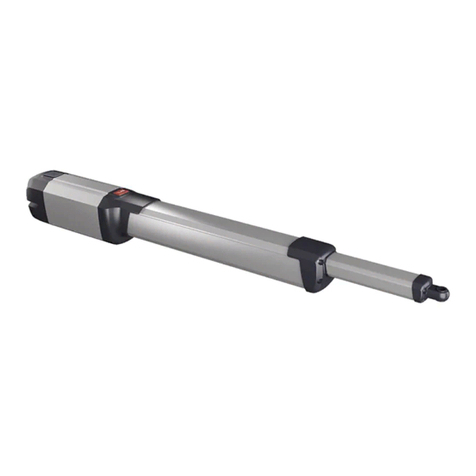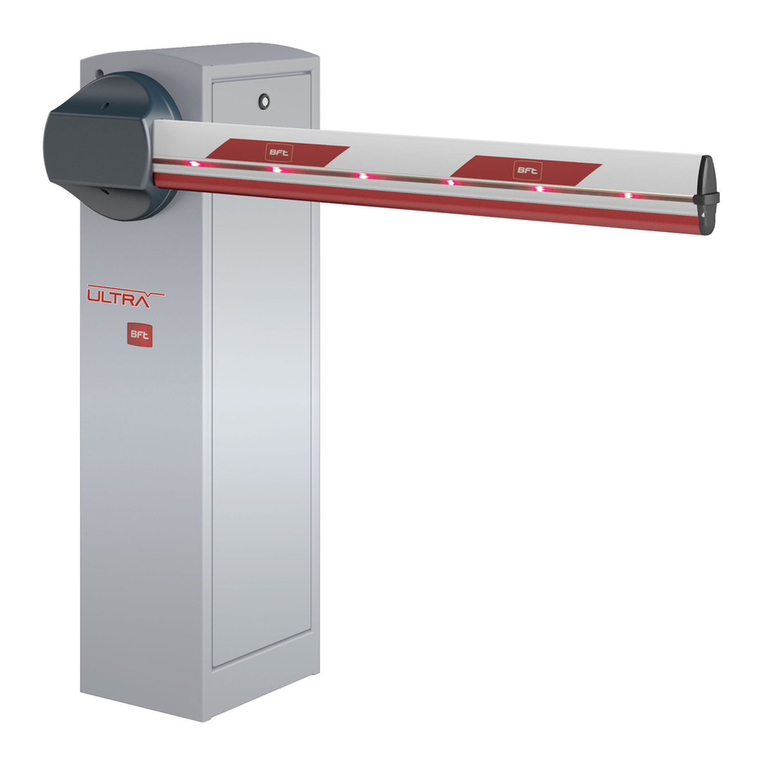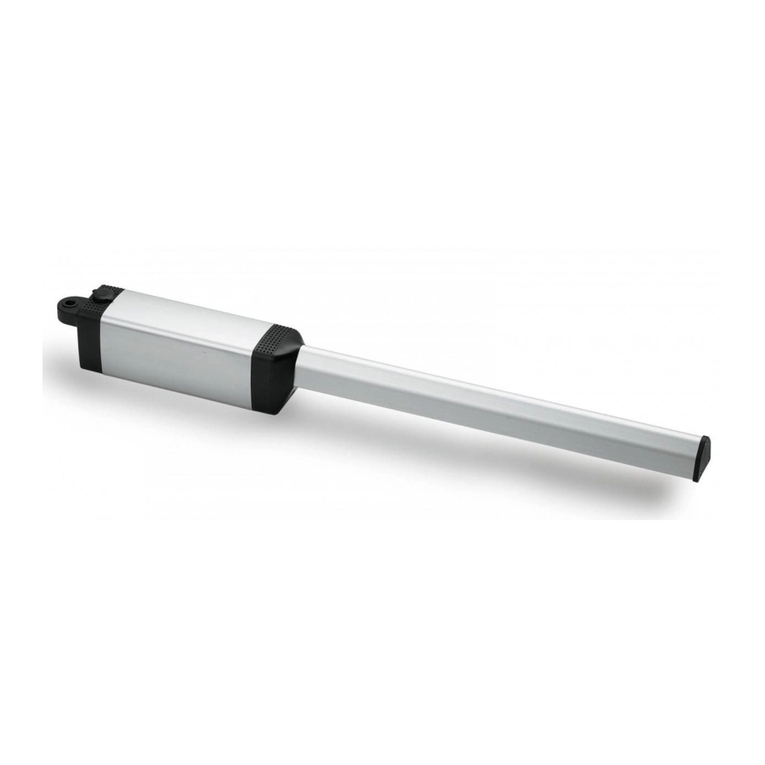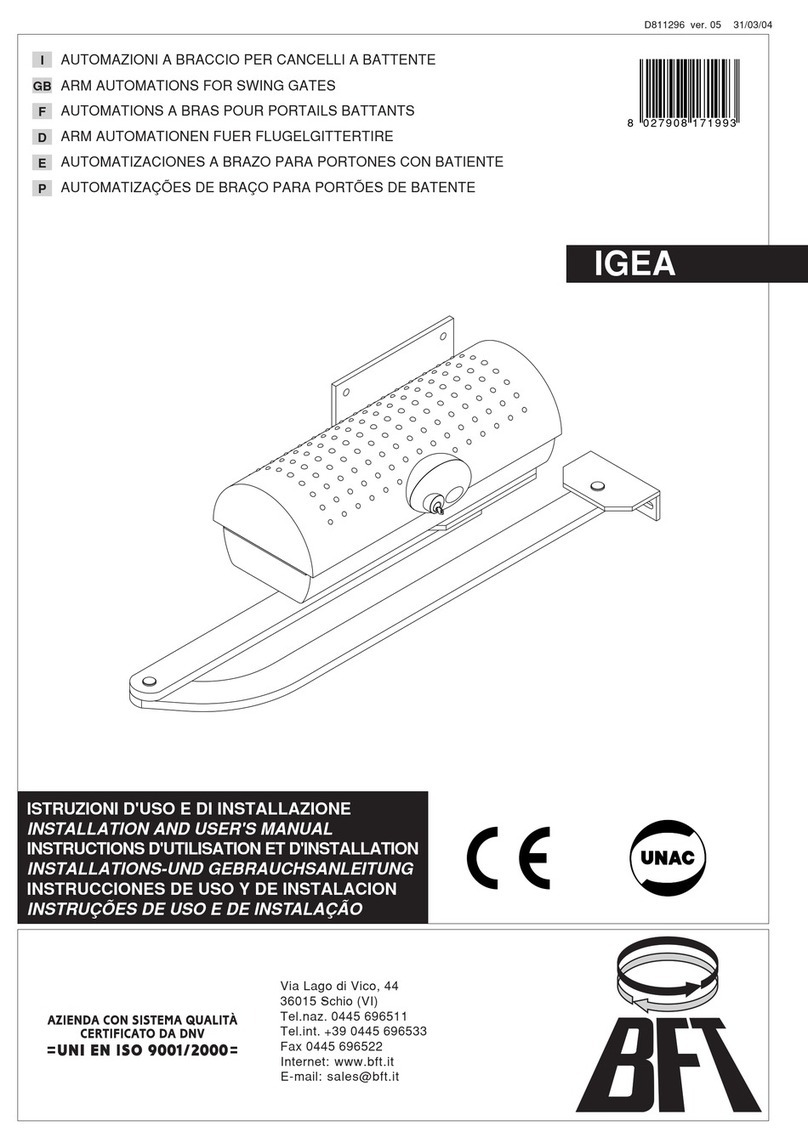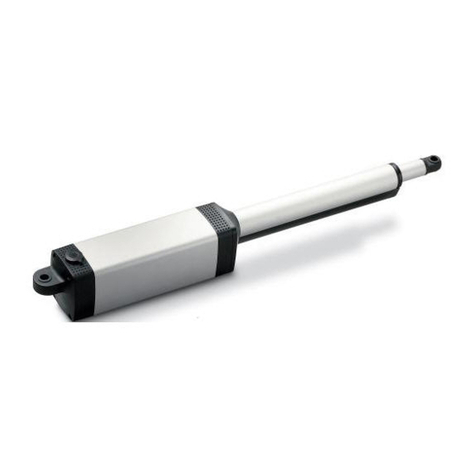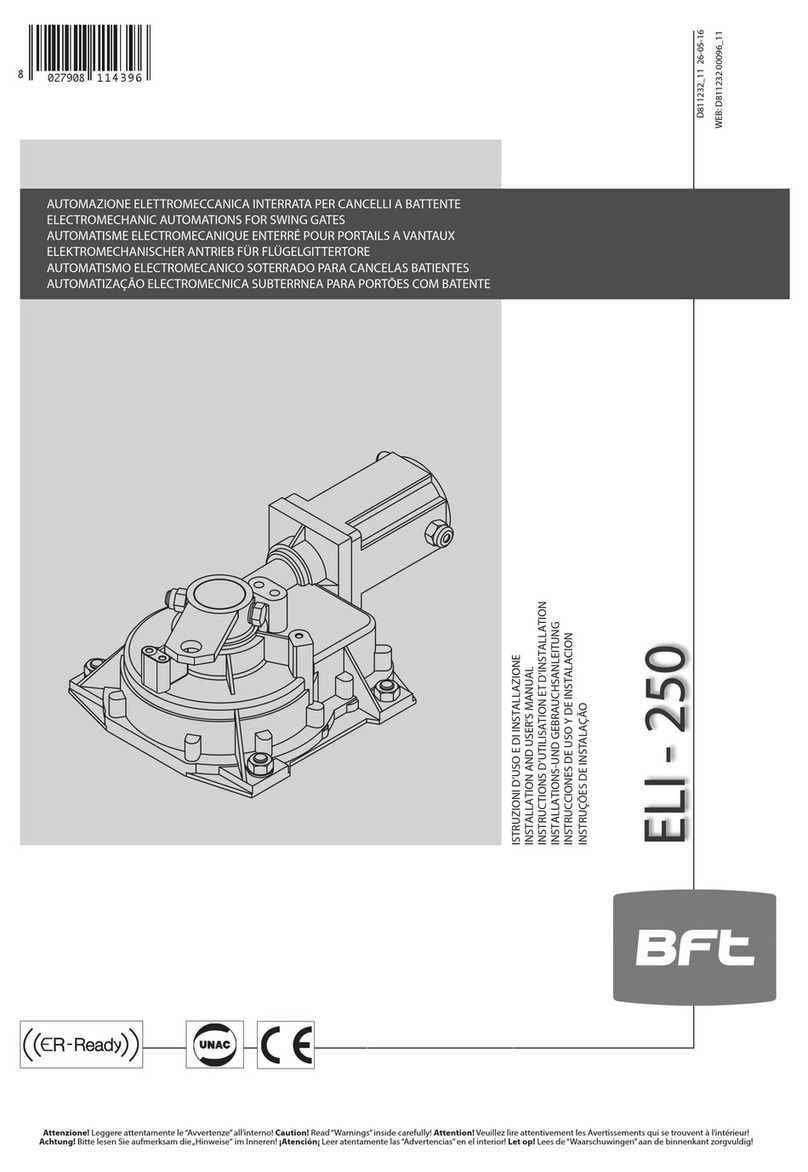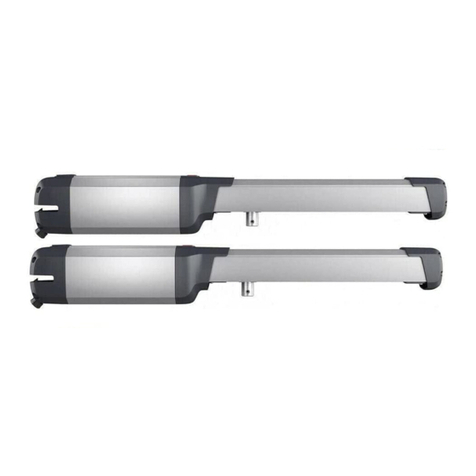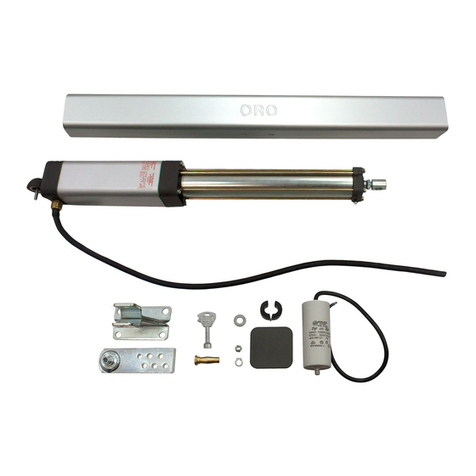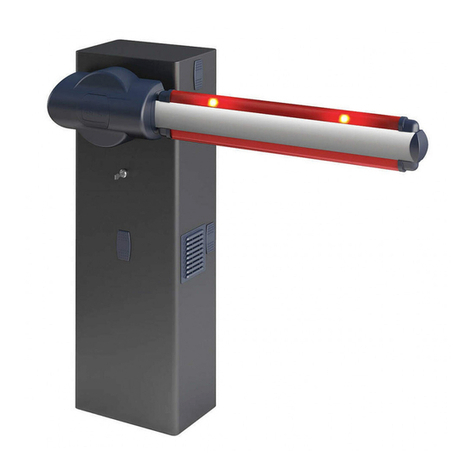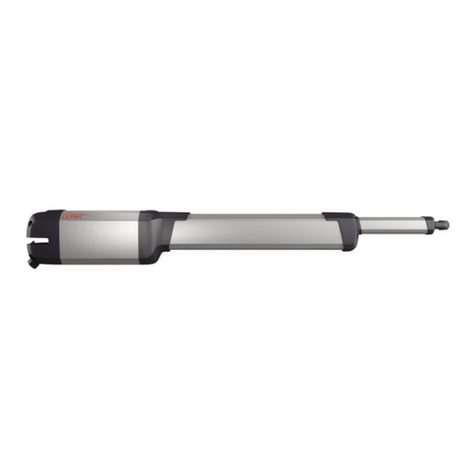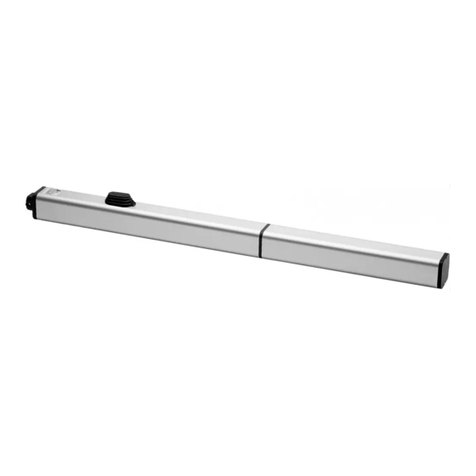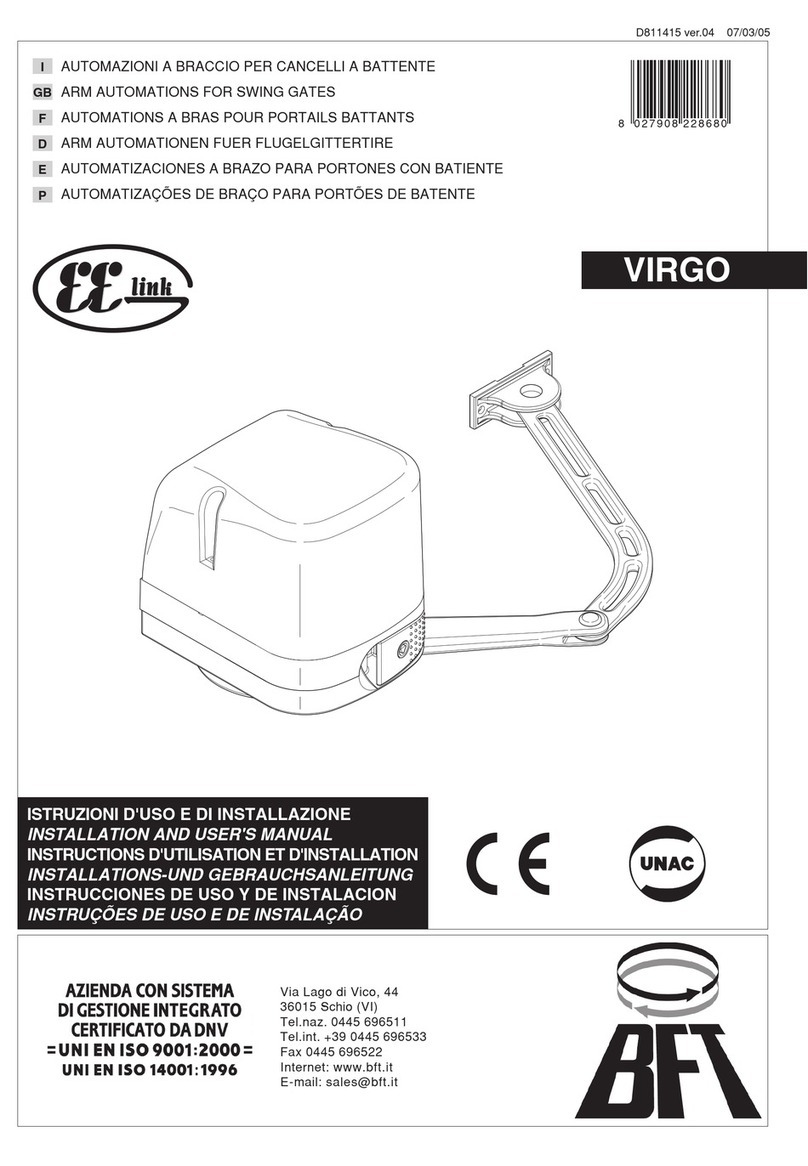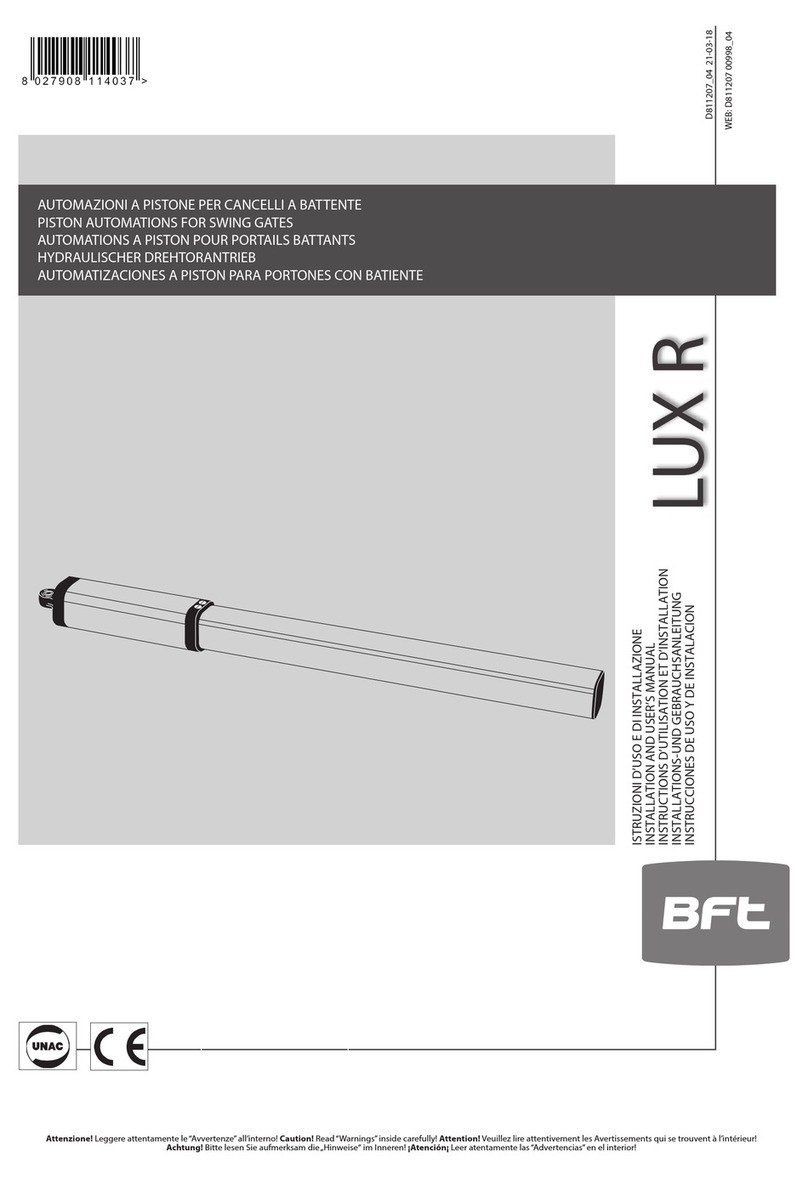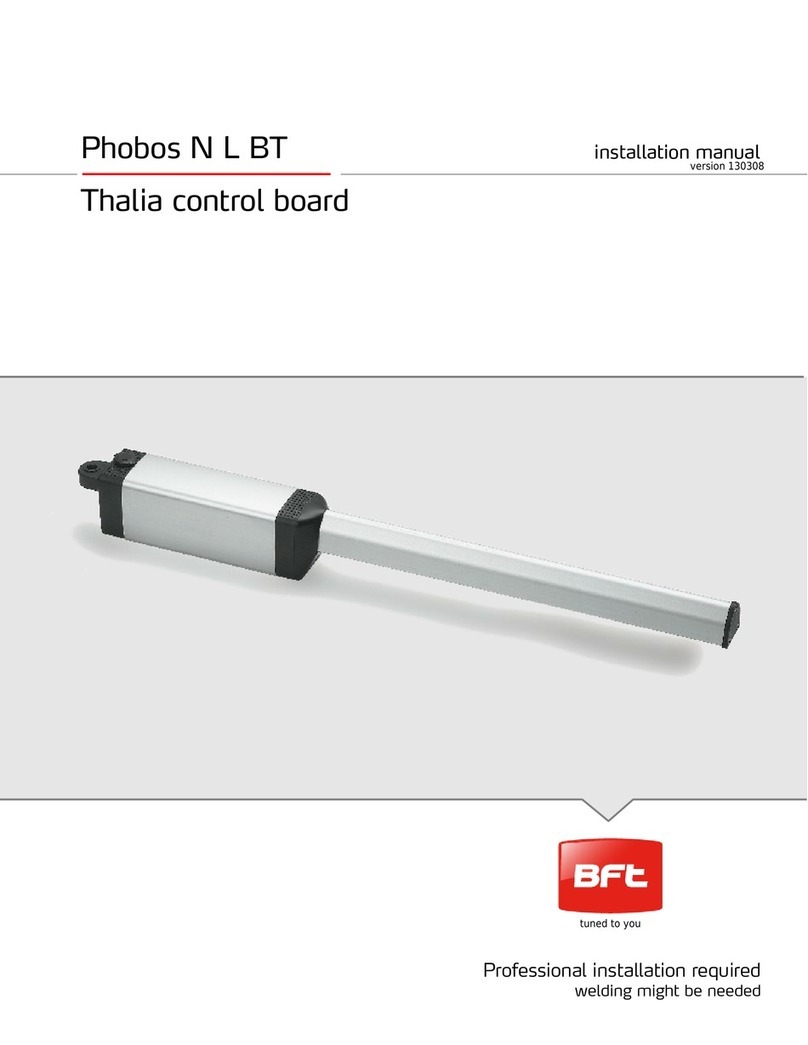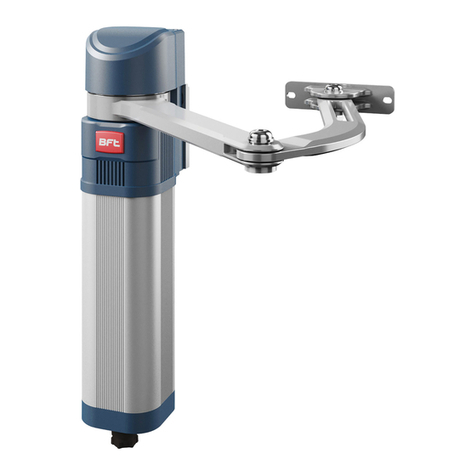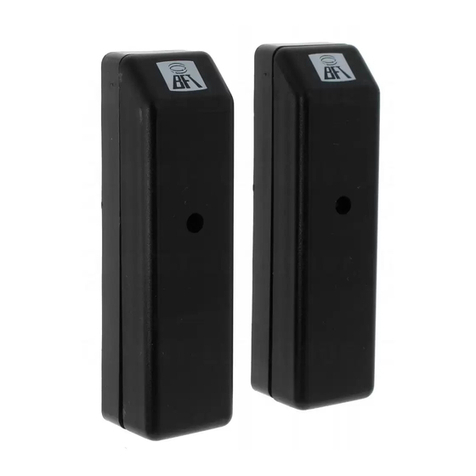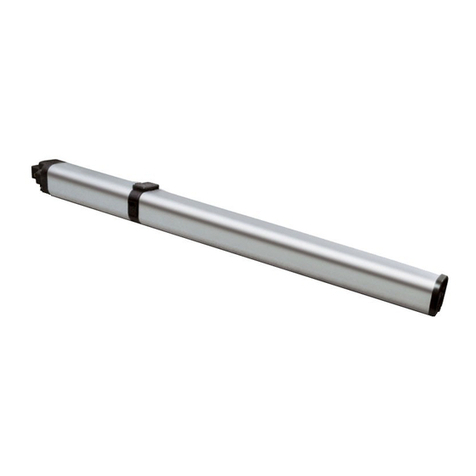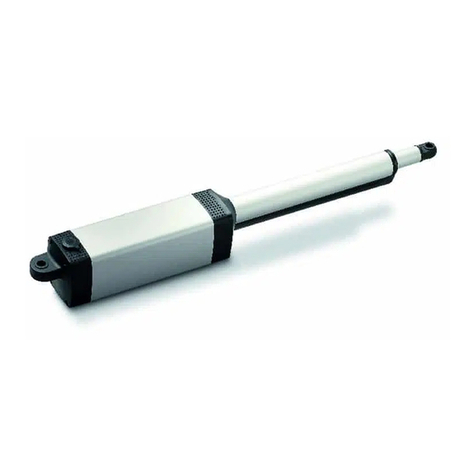10 - ELI 250 BT - Ver. 04
D811479_04
Qr) Quadro comando e ricevente incorporata.
S) Selettore a chiave.
AL) Lampeggiante con antenna accordata.
M) Attuatore.
E) Elettroserratura (obbligatoria per ante superiori a 2.5m di lunghezza).
Fte) Coppia fotocellule esterne (parte emittente).
Fre) Coppia fotocellule esterne (parte ricevente).
Fti) Coppia fotocellule interne con colonnine CF (parte emittente).
Fri) Coppia fotocellule interne con colonnine CF (parte ricevente).
T) Trasmittente 1-2-4 canali.
RG58)
Cavo per antenna.
D) Scatola di derivazione.
5.3) Predisposizione impianto elettrico
Predisporre l’impianto elettrico come indicato in fig.2 facendo riferimento
allenormevigentiper gliimpiantielettriciCEI64-8,IEC364,armonizzazione
HD384edaltrenormenazionali.Tenerenettamenteseparatiicollegamentidi
alimentazionediretedaicollegamentidiservizio (fotocellule,costesensibili,
dispositivi di comando ecc.).
ATTENZIONE! Si prega di utilizzare i seguenti cavi:
•Collegamento alla rete:cavo multipolare di sezione minima 3x1.5mm2.
•Collegamento alla centralina:
- Attuatore più lontano dalla centralina di comando (Fig.2)
per il motore: cavi 2x2.5 mm2;
per i sensori di finecorsa: cavi 3x1 mm2.
- Attuatore più vicino alla centralina di comando (Fig.2)
per il motore: cavi 2x1.5 mm2;
per i sensori di finecorsa: cavi 3x1 mm2.
Utilizzare sempre cavi previsti dalle normative vigenti. A titolo di
esempio, se il cavo è all’esterno (all’aperto), deve essere almeno pari
a H07RN-F mentre, se all’interno (in canaletta), deve essere almeno
pari a H05VV-F con sezione 3x1.5mm2.
Realizzareicollegamentideidispositividicomandoedisicurezzainarmonia
con le norme per l’impiantistica precedentemente citate. In fig.2 è riportato
il numero di collegamenti e la sezione per una lunghezza dei conduttori di
circa 100 metri; per lunghezze superiori, calcolare la sezione per il carico
reale dell’automazione.
Attenzione! Per il cablaggio dell’attuatore e il collegamento degli accessori
riferirsi ai relativi manuali istruzio ne. I quadri di comando e gli accessori
devono essere adatti all’utilizzo e conformi alle normative vigenti.
5.4) Cementazione della cassa di fondazione
Deveessere cementatainposizionesottocardine considerandoche l’albero
portantedell’attuatoredeverisultare perfettamenteallineatoall’asse di rota-
zionedell’anta.Seilcancello è deltipoa cernierefisse,rimuovereilcancello
e togliere la cerniera inferiore. Se l’anta è sufficientemente alta dal suolo
e non si può rimuovere, provvedere al suo sostegno tramite uno spessore
tra suolo ed anta stessa durante la messa in opera. Se il cancello è del
tipo a cerniere regolabili, togliere quella inferiore, allentare la cerniera
superiore e spostare lateralmente l’anta. Se il cancello è di nuova realiz-
zazione, prevedere una cerniera superiore del tipo regolabile.Eseguire uno
scavo di fondazione delle dimensioni indicate in fig.4.Prevedere un tubo di
scarico(fig.4)perl’acquapiovanainmododaevitareristagniall’internodella
cassa di fondazione. Predisporre la canaletta per il cavo di alimentazione
fino alla vicina scatola di derivazione ”D”. Realizzare sul fondo, una solida
fondazione (fig.3) dove annegare il cassone di fondazione.Per ottenere una
buona ortogonalità tra casse e ante, traguardare l’allineamento delle stesse
con una corda tesa tra i 2 perni portanti, allineando i 2 riferimenti ”C” tra di
loro (vedi fig.14).Lasciare rapprendere il cemento per il tempo necessario.
6) MONTAGGIO DELL’ANTA
• Ingrassare abbondantemente il perno presente nella cassa di fondazione.
• Posizionare l’assieme leve infilando il tubo A nel perno della cassa di
fondazione come in fig.9.Nel caso l’altezza delle leve assiemate non sia
sufficiente, prevedere uno spessore ”S” da interporre tra il gruppo leve
assiemate e l’anta del cancello come in fig.5.
• Posizionare le ante in chiusura ed in battuta nel fermo d’arresto centrale.
• Allineare perfettamente il gruppo leve assiemate al cardine.
• Se si usa uno spessore, saldarlo prima all’anta e poi saldare il gruppo
leve allo spessore.
• Verificare il funzionamento dell’anta.
• Se non si inserisce il motoriduttore, montare il coperchio della cassa di
fondazione e fissarlo con le apposite viti.
A questo punto il cancello si apre e si chiude manualmente.
Rimane da posizionare il motoriduttore.
7) MONTAGGIO MOTORIDUTTORE
Togliere i dadi dal fondo della cassa con chiave a tubo CH19.
•
Montare i sensori di finecorsa e i fermi meccanici sulle piastre (Fig. 6A).
• Avvitare le viti VR e le rispettive vitiVT 4x12 ed individuare la posizione
di fissaggio destra o sinistra (Fig.6A).
Lati piastra marchiati: R- LATO DESTRO
L -LATO SINISTRO.
•
Fissare la piastra sul motoriduttore utilizzando le 4 viti M8 indicate nella Fig.6B).
Dopo aver montato il motoriduttore sulla cassa di fondazione, collegare
la centralina di comando per poter spostare la leva di uscita e, di seguito,
fissare le altre due viti M8 (Fig.9).
• Fissare il magnete sulla piastra come indica il disegno di Fig.7.Di seguito
montarel'assiemepiastrasull'alberouscitamotoriduttoreeindividuarelapo-
sizione in diagonale dei fori (R-L) per il fissaggio destra o sinistra (Fig.7).
• Il motoriduttore si fissa alla cassa di fondazione nella posizione indicata
in Fig. 9 utilizzando i 4 dadi precedentemente tolti.
• Farpassareicavideisensorifinecorsainmodochenonvadavoatoccare
parti in movimento (Fig.9).
• Per ottenre un senso di rotazione orario collegare i fili del motore come
indica la Fig. 15. Per il senso antiorario invertire il collegamento.
• Montare i particolari della leva di collegamento motore-perno, nella
sequenza corretta indicata in Fig.8 e Fig.9.
Nel caso, la posizione assunta dalle leve, intralci il montaggio dei parti-
colari, dare alimentazione ai motori (tramite la centralina) fino a quando
le leve raggiungono la posizione desiderata.
• Ingrassare il mozzo dentro il quale andrà infilato il tubo A e i mozzi della
leva B (Fig.9).
• Verificare l’operazione di apertura e chiusura.
• Applicare all’anta le etichette di sblocco interne ed esterne, nel verso e
nella posizione indicata in fig.13. Il simbolo del lucchetto aperto, deve
essere sempre rivolto verso l’asse di rotazione dell’anta.
8) REGOLAZIONE FINECORSA
1- Posizionare i sensori sulle piastre come indicato nella fig. 10B. Colle-
gare i fine corsa di entrambi i motori alla centrale di comando e i cavi di
alimentazione del motore 2.
2- Portare elettricamente l’anta della motorizzazione 2 in apertura fino a
raggiungere la posizione massima desiderata.
3- Posizionare il sensore d’ apertura (rif.O) come in fig. 10A, rispettando
la misura minore di 3 mm dal magnete, fissandolo poi nella posizione
con le apposite viti.
4- Eseguire la stessa procedura portando l’anta in chiusura e posizionan-
do il sensore rif.C fig.10.
5- Collegare il motore 1 e ripetere la procedura di regolazione mantenen-
do collegato il motore 2.
6- Una volta eseguita la regolazione dei sensori di fine corsa dei due mo-
tori, effettuare alcune manovre verificando la posizione di fermo delle
ante ed eventualmente apportare le modifiche necessarie.
7- Procedere alla regolazione dei fermi d’arresto interni agendo sulle viti
(VRC - VRO) fig. 11. Questa operazione e’ necessaria nel caso in cui
non si utilizzino fermi d’arresto al suolo “FA” (fig.8 ).
8- Per consentire un’adeguata pressione in battuta dell’anta registrare la
vite VRO - VRC ( fig.11A, fig.11B).
9- Ultimata la regolazione, bloccare le viti VRO - VRC con le rispettivi viti
vt 4 x 12 (Fig.12).
10- E’ necessario fare le connessione del cavo del motoriduttore e dei fine
corsa in una scatola di derivazione posta all'esterno della cassa di fon-
dazione senza tagliare il cavo fornito in dotazione (fig.4).
11- Fig.11: inserire all'interno del foro filettato (A) della leva (B) l'ingrassa-
tore (C). Il grasso da noi consigliato è: ROCOL FOODLUBE MULTIPASTE.
9) REGOLAZIONE DELLA COPPIA MOTORE
ATTENZIONE! Il motore deve funzionare con un’alimentazione da 25V.
Laregolazionedicoppiadelmotore(antischiacciamento),vieneregolatanella
centralina di comando. Lo schema di collegamento del motore è riportata
nelle istruzioni d’uso della relativa centralina di comando.Vedere il manuale
istruzione della centralina di comando. La regolazione deve essere tarata
per la minima forza necessaria ad effettuare la corsa di apertura e chiusura
completa e comunque entro i limiti previsti dalle norme vigenti.
ATTENZIONE:Verificarecheilvaloredellaforzad’impattomisurato
nei punti previsti dalla norma EN12445, sia inferiore a quanto
indicato nella norma EN 12453.
ATTENZIONE! Una regolazione di coppia eccessiva, può compromettere
la sicurezza antischiacciamento. Al contrario, una regolazione di coppia
insufficiente, può non garantire una corsa di apertura o chiusura corretta.
MANUALE PER L’INSTALLAZIONE
ITALIANO
